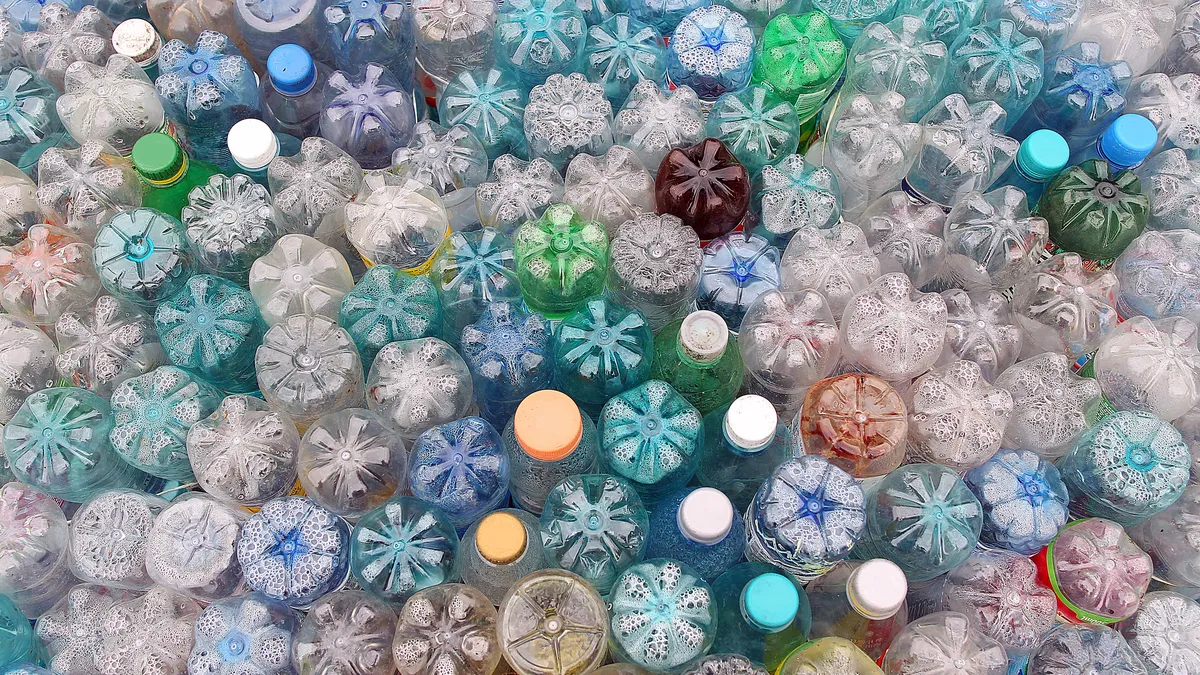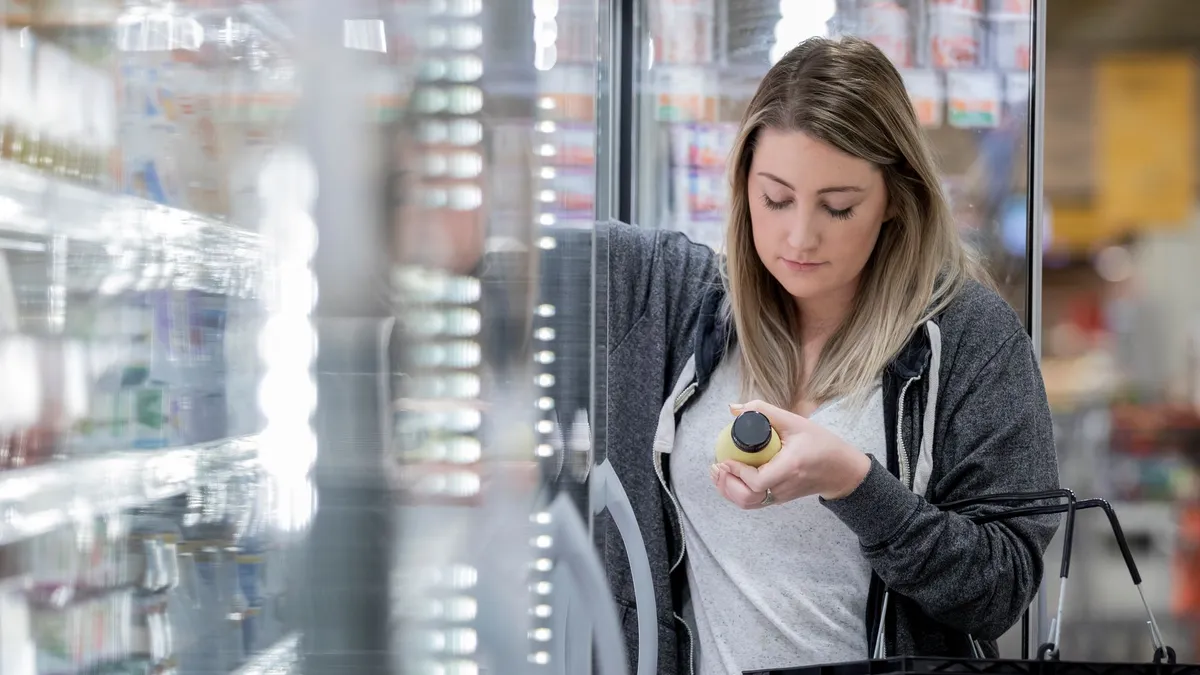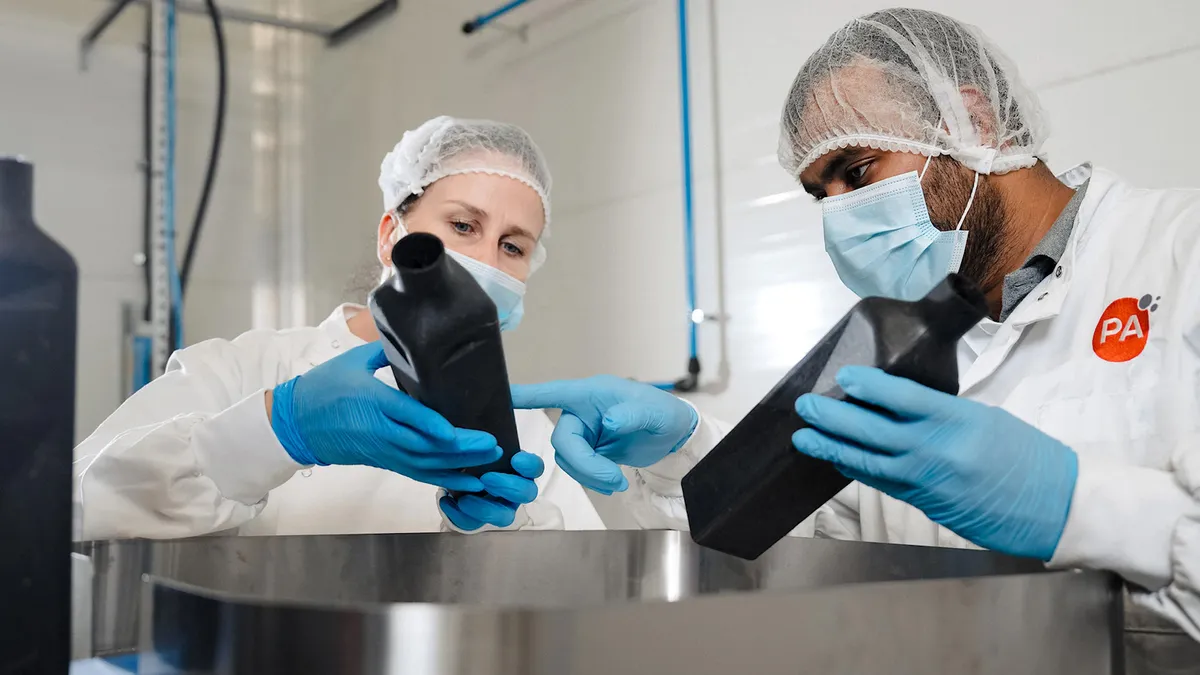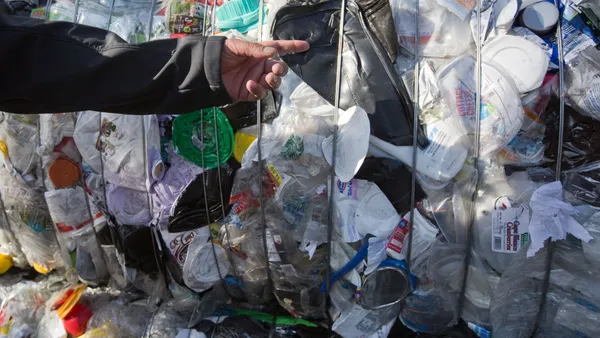Dive Brief:
- Redemption rates in most states with bottle bills stayed flat or dropped slightly in 2022 compared with the previous year, according to data from the Container Recycling Institute.
- Beverage container redemption rates for 2022 in Michigan, California, New York, Massachusetts and Connecticut were within one percent of 2021 rates or didn’t change at all. Oregon and Maine saw rate increases in that time, while Hawaii and Vermont had notable decreases. Iowa does not have current data, CRI says.
- Stagnant rates could be remedied with program modernizations like higher deposit amounts, expansions to cover more types of containers or more convenient ways to return containers, said CRI President Susan Collins in a news release. States that recently updated their bottle bills should see redemption rates rise in coming years, she said.
Dive Insight:
States continue to debate major updates to their bottle bills each legislative session, and such programs can be tough to change through legislation due to competing interests from environmental groups, beverage companies and local governments. Successful bills can take years to implement or see the effects from changes.
Changes in redemption rates “can lag given the time needed for more consumers to learn about these changes and adjust their behavior to return newly eligible bottles and cans for the deposit refund,” Collins said in the release.

New laws in Connecticut and California could help raise rates in those states, CRI said.
In January, Connecticut began adding noncarbonated beverages and hard ciders to its bottle bill. It also raised the handling fee for retailers and redemption centers and added funding for reverse vending machines at certain chain stores, which CRI said resulted in over 300 new redemption locations in the state.
In January 2024, Connecticut will raise its deposit amount on certain containers from 5 to 10 cents.
Last year, California passed SB 1013, which adds wine and distilled spirits to the state’s container deposit system starting Jan. 1, 2024. CRI says the update will add half a billion additional bottles and cans to the program each year, making up about 300,000 tons “of material that had previously been destined for the landfill.”
The state’s budget bill also added about $400 million in bottle bill program spending for initiatives such as startup funding for recycling and processing centers, reverse vending machines and bag drops.
This year, California lawmakers are also working to pass a bill that would add 100% fruit and vegetable juice to the bottle bill, also starting in January 2024, which CRI estimates would add another 188 million containers to the program. The bill would also update the payment formula that funds recycling centers, a move meant to prevent more recycling centers from closing, especially during times when scrap prices are particularly volatile. California had a 60% rate in 2022, up from 59% the previous year.
Helping redemption centers stay afloat is another key aspect of maintaining high bottle return rates, industry experts say. Maine passed an emergency bill in May to increase the handing fee for redemption centers, a move proponents said was urgently needed to keep more locations from closing. Yet some distributors and beverage brands like BlueTriton and Coca-Cola Beverages Northeast beverage brands like BlueTriton, Coca-Cola Beverages Northeast and some distributors said the increase was unfair to their businesses.
Maine passed a separate bill in August that streamlines redemption centers’ complex sorting process, establishes a commingling collective of brands and redirects unredeemed deposits to a fund meant for program improvements. Its redemption rate went from 75% in 2021 to 78% in 2022.
Massachusetts has what CRI considers an “extremely low” rate of 38%, partly because the program only accepts about 40% of beverage types. Massachusetts’ legislators are debating H. 3690, which would add more types of beverage containers and increase the deposit from 5 to 10 cents. CRI estimates that these upgrades would result in the recycling of more than 3 billion additional bottles and cans.
Though CRI and other bottle bill advocates believe program expansions and improvements will raise rates, bottle bill updates struggle to pass in numerous states. In Vermont — where the redemption rate saw the most significant drop in the country of 6% between 2021 and 2022 — Gov. Phil Scott vetoed a major bottle bill expansion, saying curbside recycling improvements would do more to help raise recycling rates than attempting to fix the state’s 1970s-era bottle deposit system. Vermont had a 72% redemption rate in 2022.
The National Waste & Recycling Association’s regional chapter, which represents major Vermont-based company Casella Waste Systems, applauded the veto. The bill would have expanded the types of containers included in the program, raised the handling fee, established a producer responsibility organization and made various other changes. The legislature could still attempt to override the veto when it reconvenes in January, CRI said.
















